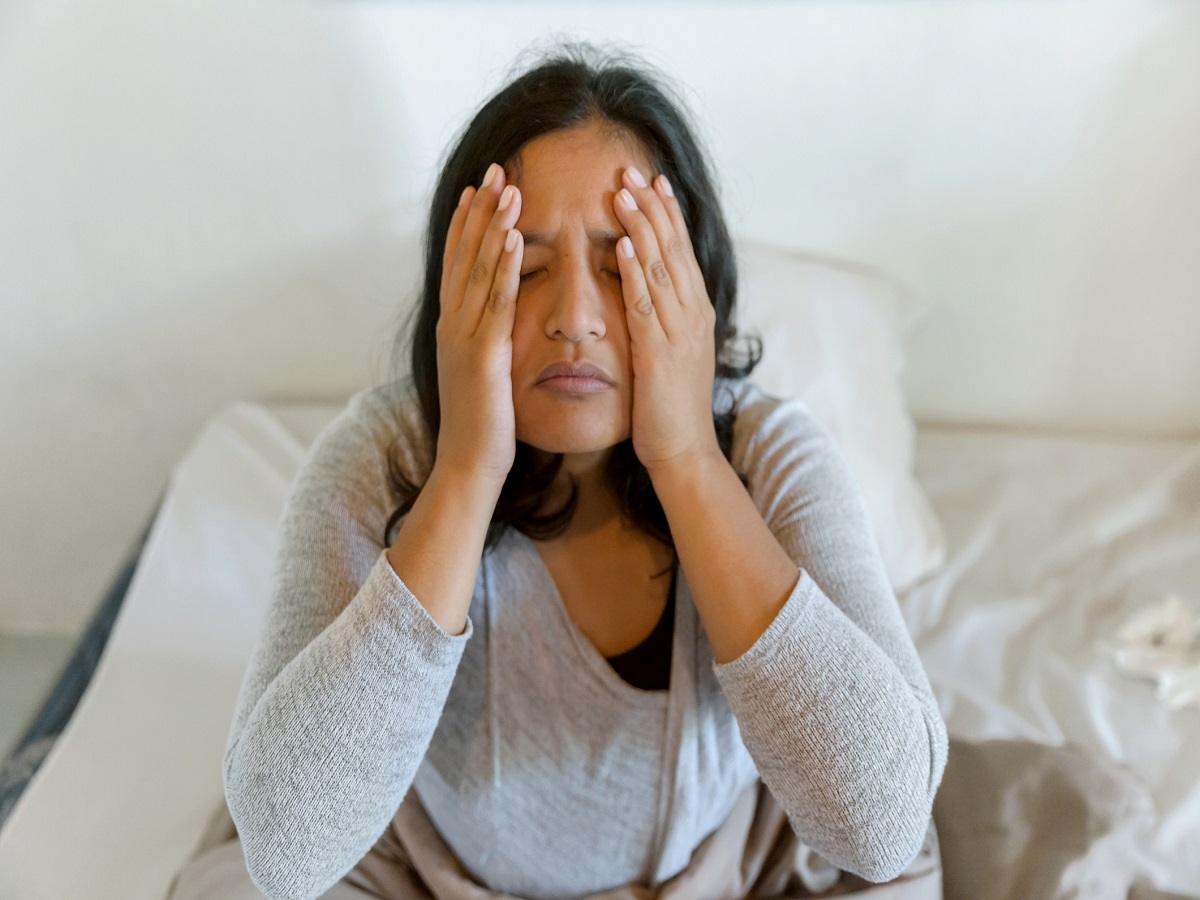UNIVERSITY PARK — The juice glass clattered to the ground, but Carolina Rosario, from Harrisburg, didn’t know how. One moment, she was holding the cup in her hand and the next, the spill spread across the floor. She said she felt disoriented, like her voice wasn’t her own, but the feeling subsided and she went to work as usual.
Three months later, the feeling struck again — her tongue felt heavy, one side of her mouth drooped and her voice echoed in her ears. One arm felt like it had disappeared, she said. Rosario tried to hold on to her phone, but it dropped to the floor one, two, three times. Rosario never felt it in her hand. This wasn’t something she could shake off. She called 911 and went to the Emergency Department at Penn State Health Milton S. Hershey Medical Center.
At age 37, Rosario became part of a startling statistic — she’s one of the 55,000 women in the U.S. who experience a stroke each year. Penn State Health neurologist Lakshmi Shankar explained that strokes are sudden impairments of neurological function. The most common form of stroke is called an ischemic stroke and occurs when blood flow to a part of the brain is blocked. Although strokes are often thought of as a condition that primarily affects men that’s not the case.
“In the past, we thought heart attacks and strokes were more common in men, but half of the people with strokes are women,” Shankar said. “In fact, stroke is the fourth leading cause of death in women, as opposed to the fifth leading cause in men.”
Although Rosario is younger than the typical stroke patient, she may have had her experience due to another condition: endometriosis. Endometriosis is one of several conditions that place women at a higher risk of stroke, said Shankar.
“Certain risk factors are common for both men and women, like conditions that increase risk of cholesterol buildup in the blood vessels, such as high blood pressure, diabetes, high cholesterol, smoking, obesity, sedentary lifestyle and obstructive sleep apnea,” Shankar said.
Women, however, have several unique health issues that can place them at a higher risk of stroke, including pregnancy complications, such as pregnancy-related hypertension and preeclampsia. Those who experience high blood pressure in pregnancy are more likely to have high blood pressure and its complications later in life.
Shankar also points out that autoimmune conditions and migraines with aura — a severe headache with visual or sensory disturbances, which are more common in women, can increase their risk. Endometriosis is a more recently discovered risk factor. Women with these conditions tend to suffer strokes at younger ages, as Rosario can attest.
Rosario showed several of the hallmark symptoms of a stroke — loss of sensation in her limbs, drooping in her face and difficulty speaking. Shankar explained that health care professionals use a simple acronym to help diagnose a stroke: BE FAST.
“B stands for balance, any sudden change in balance or a sensation of movement. E is for eyes, any sudden change in vision,” Shankar said. “F is for face, any drooping or weakness of the face. A is for arm or leg weakness, and S is for slurred or nonsensical speech or difficulty getting words out. T stands for time, meaning it’s time to get treatment. It’s time to call 911.”
Shankar cautioned that women may have other symptoms as well, including loss of consciousness or confusion. If someone experiences any of these symptoms, they should seek medical attention immediately. If a clotting type of stroke is diagnosed, highly effective clot busters are available, but they are only effective within four and a half hours after the stroke. In some cases, a procedure to remove the blood clot in the brain may be performed in the first 24 hours.
Rosario said that when she visited the ER, physicians ran tests to determine what was happening. After several days in the hospital, she was released to rehab and today takes low-dose aspirin and magnesium to prevent another stroke.
Shankar advised patients to lower their stroke risk through lifestyle modifications, including a healthy diet, plenty of physical activity and quitting smoking. She also warns migraine with aura patients to discuss their birth control options with their physician, as stroke risk can increase for migraine patients who use hormonal birth control.
If you or someone else shows signs of a stroke, call 911 immediately.




